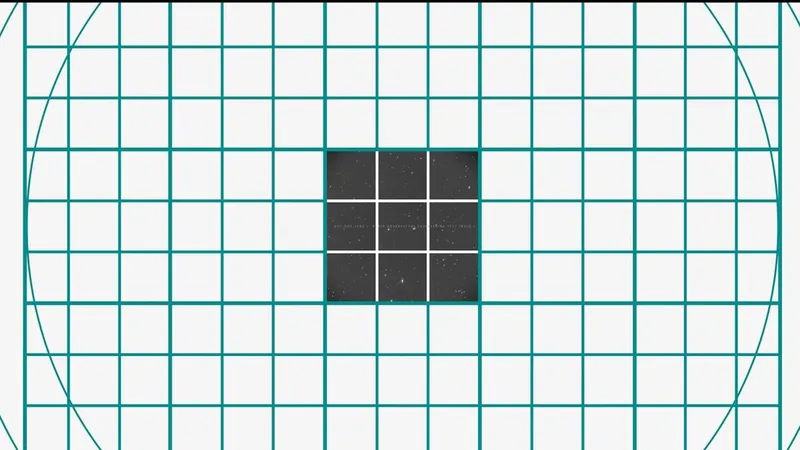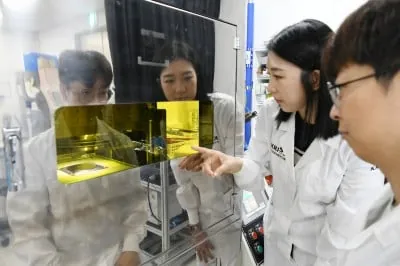
Revolutionary Rubin Observatory Passes Initial Tests: A New Era in Astronomy Beckons!
2025-01-14
Author: Jia
Revolutionary Rubin Observatory Passes Initial Tests: A New Era in Astronomy Beckons!
In an exciting breakthrough for the field of astronomy, the Vera C. Rubin Observatory in Chile has successfully completed its preliminary image capture tests. This colossal telescope, featuring an 8.4-meter aperture, is a joint venture funded by the National Science Foundation and the U.S. Department of Energy's Office of Science, and its recent achievements have scientists buzzing with anticipation.
The observatory, which has undergone a decade of meticulous construction, recently passed a rigorous seven-week shakedown phase that commenced in October 2024. During this crucial testing period, engineers utilized an engineering camera known as ComCam (short for Commissioning Camera) to capture its first images of the night sky. These early images, although only a fraction of what is to come, have laid a promising foundation for the ambitious astronomy projects ahead.
Victor Krabbendam, the project manager for the Rubin Observatory, shared his enthusiasm at the 245th American Astronomical Society (AAS) meeting, declaring the initial success of the observatory to be “wildly successful.” The engineers captured a series of images that were indicative of a well-functioning system, heralding an exciting future for astronomical research.
The Rubin Observatory aims to document the universe in unparalleled detail, embarking on an ambitious mission to create what is being described as an “ultra-high-definition time-lapse record of the universe.” The current ComCam has limited capabilities compared to the highly anticipated main instrument, the LSSTCam (Large Synoptic Survey Telescope Camera), which is designed to revolutionize our understanding of the cosmos. With 3,200 megapixels and an impressive field of view that's 21 times larger than the ComCam, the LSSTCam is destined to become the world's largest digital camera.
The first engineering image produced by the ComCam is a stunning nine-panel square captured using nine CCD sensors, totaling a considerable 144-megapixel view that depicts an area roughly twice the size of the full moon as seen from Earth. For those interested in astronomy, a zoomable version of this image is available for exploration on the Rubin Observatory's website. Throughout its testing, the ComCam successfully took approximately 16,000 images, demonstrating its reliability and capacity.
Once the LSSTCam is operational, it will cover an astounding area about 45 times larger than the full moon, transforming our ability to observe and document cosmic events. This $571 million facility is aptly named after the iconic astronomer Vera Rubin, known for her groundbreaking work that revealed the existence of dark matter in the universe.
Krabbendam reported that installation of the LSSTCam is expected to be completed by March 2025. After a brief period of testing, the observatory could unveil its first official science images by July. However, Robert Blum, the observatory’s director of operations, proposed a more optimistic timeline, suggesting that a “first light” image could be unveiled as early as June.
As we stand on the brink of a new era in astrophysics, the Rubin Observatory promises to unlock secrets of the universe that have remained hidden for generations. Will this groundbreaking facility change our understanding of cosmic phenomena forever? Time will tell, but the excitement among the scientific community is palpable!



 Brasil (PT)
Brasil (PT)
 Canada (EN)
Canada (EN)
 Chile (ES)
Chile (ES)
 Česko (CS)
Česko (CS)
 대한민국 (KO)
대한민국 (KO)
 España (ES)
España (ES)
 France (FR)
France (FR)
 Hong Kong (EN)
Hong Kong (EN)
 Italia (IT)
Italia (IT)
 日本 (JA)
日本 (JA)
 Magyarország (HU)
Magyarország (HU)
 Norge (NO)
Norge (NO)
 Polska (PL)
Polska (PL)
 Schweiz (DE)
Schweiz (DE)
 Singapore (EN)
Singapore (EN)
 Sverige (SV)
Sverige (SV)
 Suomi (FI)
Suomi (FI)
 Türkiye (TR)
Türkiye (TR)
 الإمارات العربية المتحدة (AR)
الإمارات العربية المتحدة (AR)